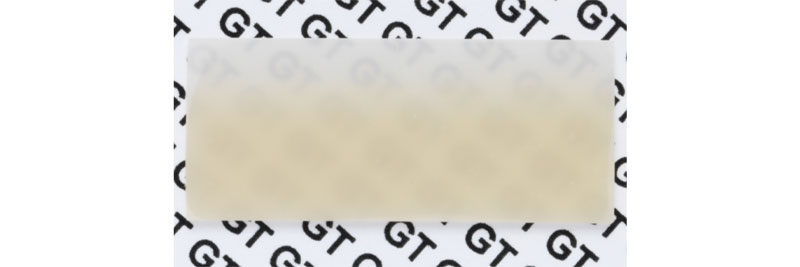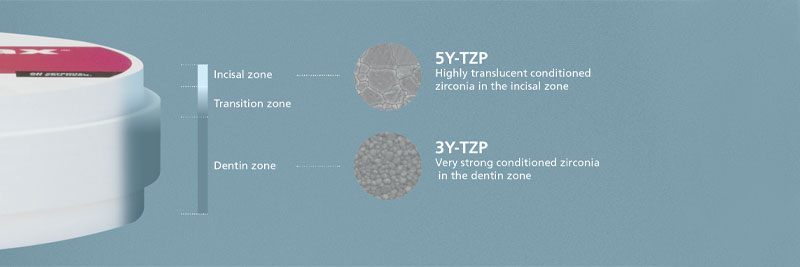A New Generation of Zirconia
Restorative materials in dentistry are constantly evolving. At this year’s Chicago Midwinter Meeting, Ivoclar-Vivadent launched a new generation of zirconia called IPS e.max ZirCAD Prime, which uses a new gradient manufacturing technology.
It combines 3Y-TZP and 5Y-TZP powders for a product that offers a seamless progression of shade and translucency in one disc, eliminating the visible layers of color change. The 5Y-TZP provides translucent conditioned zirconia for the incisal zone, and the 3Y-TZP provides strong conditioned zirconia in the dentin zone. Between the two, there is a gradual transition from one material to the other. This offers a true progression in material from dentin to enamel.


As you may be aware there are several generations of zirconia available on the market. Zirconia 3Y-TZP (first generation) is a 3 mol% yttria-stabilized tetragonal zirconia polycrystalline ceramic with a flexural strength of 900-1,200 MPa.
The 3Y-TZP (second generation) zirconia is a 3 mol% yttria-stabilized tetragonal zirconia polycrystalline ceramic with a slight increase in translucency. It is more susceptible to low-temperature degradation because there is less alumina to stabilize the tetragonal phase and it has a flexural strength of 800-1000 MPa.
The 5Y-ZP (third generation) is a 5 mol% yttria-stabilized zirconia polycrystalline ceramic with a 10-50% cubic phase that does not undergo transformation toughening or low temperature degradation. It has a flexural strength 500-800 MPa with similar wear characteristics to Y-TZP.
The new ZirCAD Prime is compatible with the rest of the IPS e.max system and produces a restoration that is more esthetic than the previous zirconia products described above. It has a flexural strength of 1,200 MPa, so can be used for anything from single crowns to 14-unit bridges, combining strength with improved esthetics. The discs come in two thicknesses so they can be used anteriorly and posteriorly, and labs can use any processing technique to develop the esthetics of the restorations — including staining, cut-back, layering, and infiltration.
I am sure we will see a continuing evolution of zirconia products and an improved array of uses as material science progresses. Before deciding on which material to use for a case, it is always recommended that you collaborate with your lab technician to ensure you are making the best choice to meet your and your patient’s expected restorative outcome.
SPEAR STUDY CLUB
Join a Club and Unite with
Like-Minded Peers
In virtual meetings or in-person, Study Club encourages collaboration on exclusive, real-world cases supported by curriculum from the industry leader in dental CE. Find the club closest to you today!

By: Robert Winter
Date: June 17, 2019
Featured Digest articles
Insights and advice from Spear Faculty and industry experts


